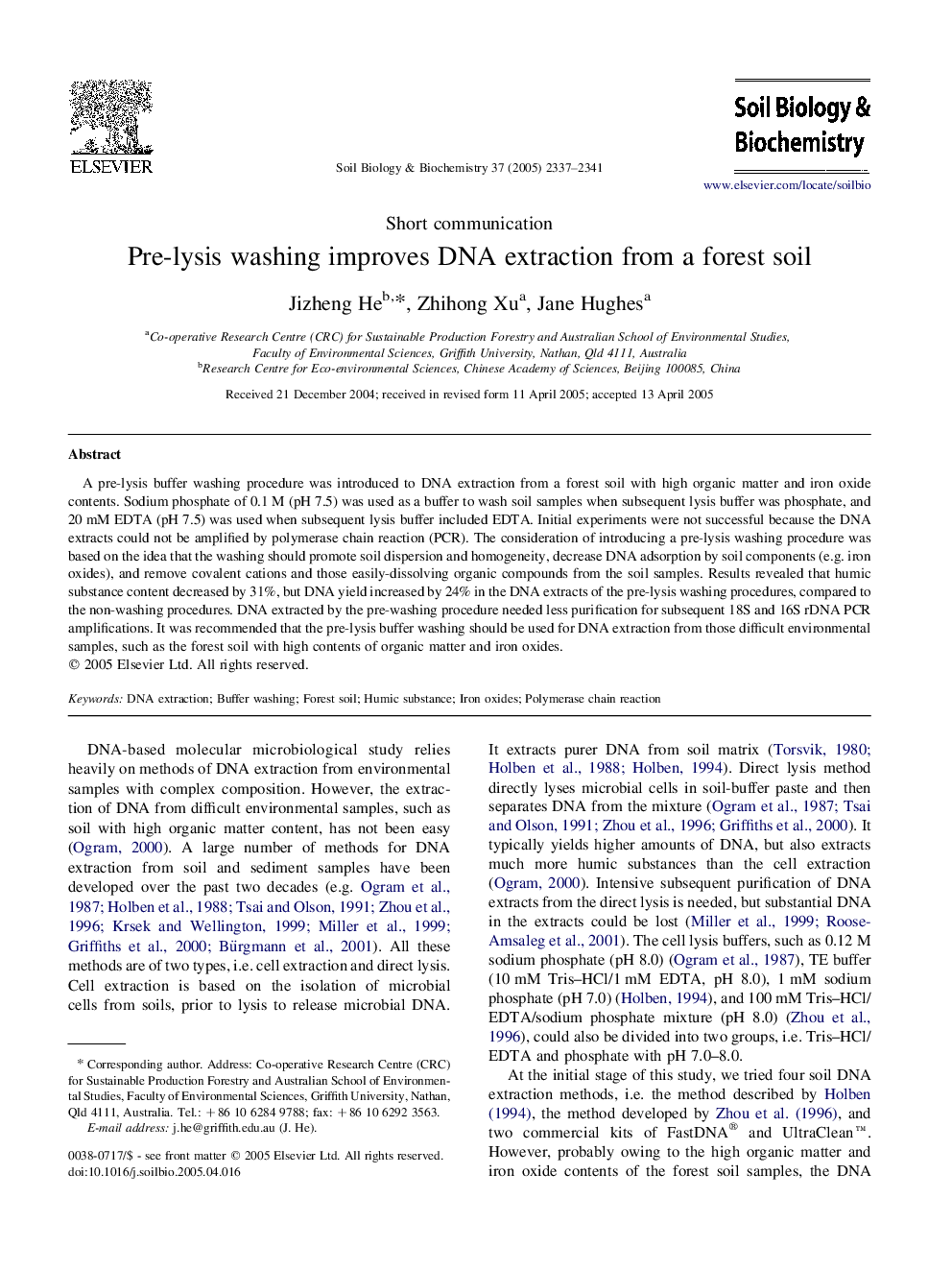| Article ID | Journal | Published Year | Pages | File Type |
|---|---|---|---|---|
| 2026519 | Soil Biology and Biochemistry | 2005 | 5 Pages |
A pre-lysis buffer washing procedure was introduced to DNA extraction from a forest soil with high organic matter and iron oxide contents. Sodium phosphate of 0.1 M (pH 7.5) was used as a buffer to wash soil samples when subsequent lysis buffer was phosphate, and 20 mM EDTA (pH 7.5) was used when subsequent lysis buffer included EDTA. Initial experiments were not successful because the DNA extracts could not be amplified by polymerase chain reaction (PCR). The consideration of introducing a pre-lysis washing procedure was based on the idea that the washing should promote soil dispersion and homogeneity, decrease DNA adsorption by soil components (e.g. iron oxides), and remove covalent cations and those easily-dissolving organic compounds from the soil samples. Results revealed that humic substance content decreased by 31%, but DNA yield increased by 24% in the DNA extracts of the pre-lysis washing procedures, compared to the non-washing procedures. DNA extracted by the pre-washing procedure needed less purification for subsequent 18S and 16S rDNA PCR amplifications. It was recommended that the pre-lysis buffer washing should be used for DNA extraction from those difficult environmental samples, such as the forest soil with high contents of organic matter and iron oxides.
